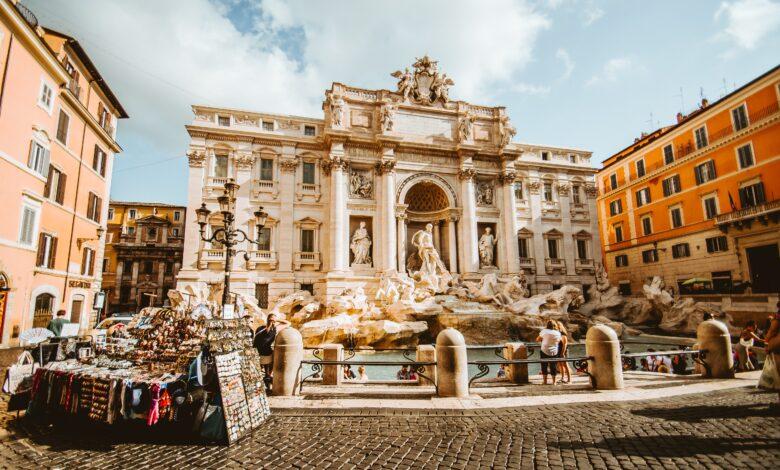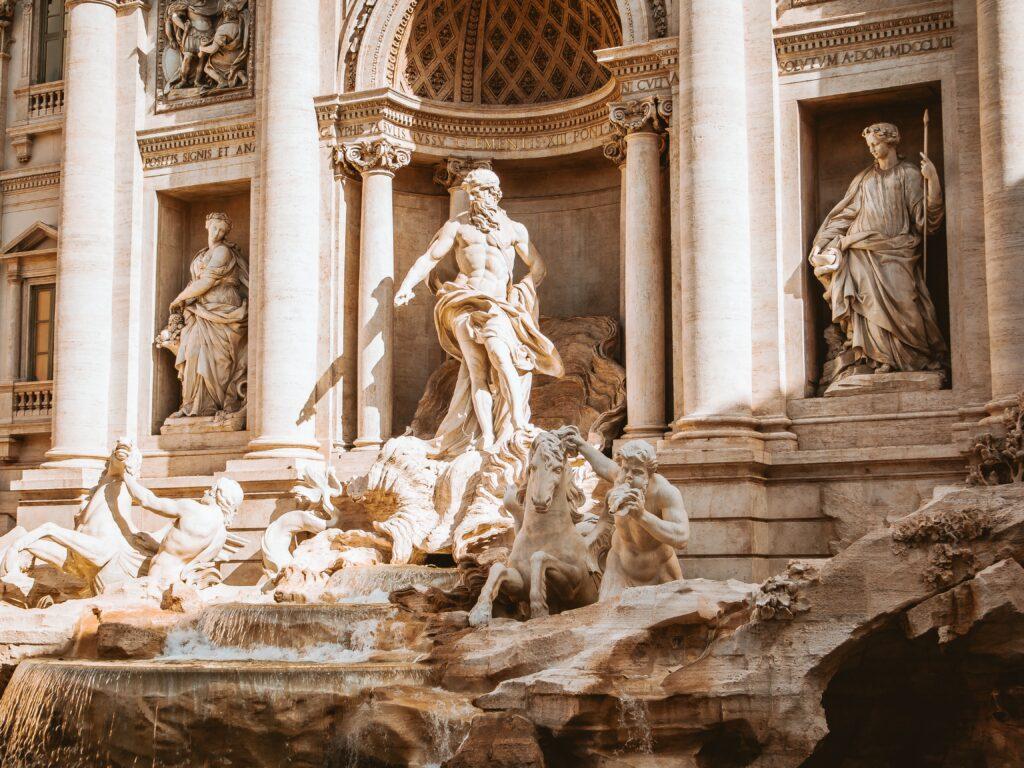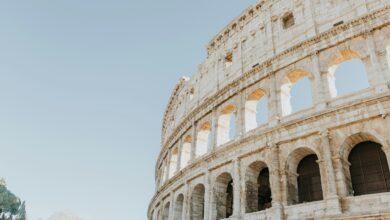🏛️ Historical Riches of Rome: Colosseum, Forum, and More 🏟️
Delve into Rome's Treasures: Discover the Colosseum, Forum, and Beyond

Introduction
Rome, the Eternal City, holds within its ancient walls an unparalleled wealth of historical treasures. The very name “Rome” conjures images of grandeur, power, and a rich tapestry of history that has shaped the world as we know it. In this blog post, we’ll embark on a journey through time, delving into the historical riches of Rome, with a special focus on the Colosseum, the Roman Forum, and more. Join us as we explore the heart of ancient Rome and uncover the stories etched in its stones, streets, and monuments.
The Colosseum: An Icon of Ancient Rome
Historical Background and Construction of the Colosseum
The Colosseum, also known as the Flavian Amphitheatre, stands as one of the most iconic structures from ancient Rome. Construction of this grand amphitheater began in AD 70-72 under the emperor Vespasian and was completed in AD 80 by his son Titus. Its location in the heart of Rome served as a symbol of the Roman Empire’s power and grandeur. The Colosseum was primarily designed for hosting various forms of public entertainment, and its construction was a testament to the engineering and architectural prowess of the Roman Empire.
Description of the Colosseum’s Architecture and Seating Capacity
The Colosseum’s architecture is a marvel of ancient engineering. This massive elliptical amphitheater is made of concrete and sand, featuring a height of 48 meters (approximately 157 feet) with a circumference of 545 meters (about 1,788 feet). Its innovative design included a complex system of underground passages and machinery that allowed for the swift deployment of animals, gladiators, and stage props.
With a seating capacity estimated to be between 50,000 and 80,000 spectators, the Colosseum could accommodate a large portion of Rome’s population. The seating arrangement was meticulously organized, with the social hierarchy of the time determining where people sat. The higher social classes enjoyed better views, while the lower classes occupied the upper levels.
Gladiator Battles and Events Held at the Colosseum
The Colosseum hosted a wide array of events, but it is most famous for its gladiator battles. These battles were intense and bloody, pitting skilled fighters against each other, as well as against wild animals. In addition to gladiator contests, the Colosseum hosted other forms of entertainment, including mock sea battles, chariot races, and theatrical performances.
Modern-Day Significance and Preservation Efforts
Today, the Colosseum is not just a historical relic but also a symbol of Rome and Italy. It is one of the most visited tourist attractions globally, drawing millions of visitors each year. Preservation efforts are ongoing to maintain its structural integrity, with restoration projects aimed at ensuring its continued existence for future generations.
The Roman Forum: The Heart of Ancient Rome
Historical Significance and Role of the Roman Forum in Ancient Rome
The Roman Forum, also known as the Forum Romanum, was the bustling epicenter of ancient Rome. Its historical significance cannot be overstated, as it played a pivotal role in the social, political, and cultural life of the city. This rectangular plaza served as the nucleus of Rome, hosting a myriad of events, ceremonies, and gatherings that defined the Roman way of life for over a millennium.
Description of Key Structures within the Roman Forum
The Roman Forum was adorned with numerous architectural marvels, some of which have endured to this day. One of the most iconic structures was the Temple of Saturn, dedicated to the god of agriculture and wealth. This temple housed the state treasury and was a symbol of Rome’s financial stability and prosperity. Another notable structure was the Curia, which served as the meeting place for the Roman Senate, the governing body of the Roman Republic and later the Roman Empire.
The Forum’s Role in Politics, Commerce, and Religion
The Forum was a multifunctional space where politics, commerce, and religion intertwined. It was the hub of political life, with the Curia at its center where important decisions were made. In addition, the Forum served as a marketplace, where traders from near and far gathered to sell goods, turning it into a bustling economic center.
Religion played a central role in Roman life, and the Forum was home to numerous temples, altars, and shrines dedicated to various gods and goddesses. Religious ceremonies and processions were a common sight in this sacred space.
Preservation and Restoration Efforts
Over the centuries, the Roman Forum suffered neglect and the ravages of time. However, extensive preservation and restoration efforts have been ongoing to protect this invaluable archaeological site. Archaeologists and conservationists have meticulously worked to uncover and restore the ancient structures, allowing visitors to step back in time and witness the grandeur of ancient Rome.
Exploring Other Historical Gems in Rome
While the Colosseum and the Roman Forum are undeniably magnificent, Rome boasts an array of historical gems that beckon travelers to immerse themselves in the city’s rich history and culture. Here, we’ll delve into some of the notable historical sites that should be on your must-visit list when exploring the Eternal City.
The Pantheon: A Marvel of Ancient Engineering
The Pantheon, with its iconic dome and grand portico, is a masterpiece of ancient Roman engineering and architecture. Originally built as a temple to honor all the gods, it is renowned for its near-perfect, unreinforced concrete dome. The oculus, a circular opening at the dome’s apex, allows sunlight to stream into the majestic interior. The Pantheon’s historical importance extends to its transformation into a Christian church in the 7th century, preserving its awe-inspiring design for posterity.
Palatine Hill: The Birthplace of Rome
The Palatine Hill, one of the Seven Hills of Rome, is the legendary birthplace of Rome. This sprawling archaeological site offers visitors a chance to wander through the ancient ruins of imperial palaces, villas, and breathtaking gardens. The Palatine Hill’s historical significance lies in its role as the center of Roman power, where emperors resided and made crucial decisions. It’s also where the mythical she-wolf nursed Romulus and Remus, the founders of Rome.
The Arch of Constantine: A Triumphal Monument
The Arch of Constantine, situated near the Colosseum, is a triumphal monument built to celebrate the victory of Emperor Constantine I in the Battle of Milvian Bridge in AD 312. This architectural marvel showcases intricate reliefs and sculptures, including reused pieces from earlier Roman monuments. Its historical importance is twofold: it commemorates a pivotal moment in Roman history and serves as a testament to the artistry of the time.

Tips for Visiting Multiple Sites in a Day
When exploring these historical sites in Rome, efficient planning is key. To make the most of your visit, consider the following tips:
- Purchase a Roma Pass: This card offers access to multiple historical sites and public transportation, saving you time and money.
- Plan Your Route: Organize your itinerary based on the proximity of the sites. The Pantheon and the Palatine Hill are within walking distance of the Roman Forum and the Colosseum.
- Early Start: Begin your day early to avoid crowds and make the most of your time.
- Guided Tours: Consider joining guided tours to gain in-depth knowledge and skip long lines.
- Stay Hydrated and Take Breaks: Rome can get scorching in the summer, so stay hydrated and take short breaks to rest and savor the experience.
By exploring these additional historical gems in Rome and following these tips, you’ll embark on a captivating journey through time, delving deep into the city’s extraordinary past and embracing its unique cultural heritage.
Experiencing the Eternal City
FAQs
Q. How much does it cost to visit the Colosseum and Roman Forum?
A. The combined ticket for the Colosseum and Roman Forum costs €16. It includes access to both sites and the Palatine Hill. There are also options for guided tours that provide in-depth insights.
Q. Are there long queues to enter these attractions?
A. During peak tourist seasons, there can be long lines. To skip the lines, consider purchasing a skip-the-line ticket or booking a guided tour in advance.
Q. Can I take photographs inside the Colosseum and Roman Forum?
A. Yes, photography is allowed. Capture the beauty and history of these sites, but be mindful of any restrictions on the use of tripods or flash.
Q. What is the best time to visit these attractions to avoid crowds?
A. To avoid crowds, try visiting early in the morning or late in the afternoon. Additionally, planning your visit during the shoulder seasons (spring or autumn) can help you avoid the peak summer crowds.
Q. Are there guided tours available for the Colosseum and Roman Forum?
A. Yes, there are various guided tours offered. These tours provide informative insights into the history and significance of these sites, making your visit more enriching.
Q. Is there a good time to visit the Colosseum to see it illuminated at night?
A. The Colosseum is beautifully illuminated at night. To enjoy this sight, consider visiting during the summer months when it stays open later into the evening.





Facebook Comments